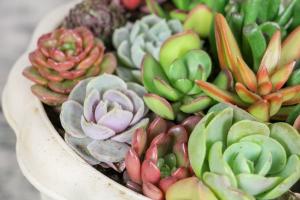How Many Tomato Plants Per Cage
When it comes to growing tomatoes, using cages is a popular method for supporting the plants and keeping them off the ground. However, the question remains – how many tomato plants should you put in each cage? The answer varies depending on several factors, including the type of tomato, the size of the cage, and your desired yield.
Determining the Type of Tomato
The type of tomato plant you are growing will have a significant impact on how many plants you should put in each cage. Indeterminate tomatoes, also known as vining tomatoes, can grow up to 6 feet in height and continue to produce fruit throughout the growing season. These types of tomatoes usually require larger cages and more spacing between plants to accommodate their size and fruit production.
Determinate tomatoes, on the other hand, are usually smaller in size, growing up to 4 feet in height, and produce most of their fruit in a shorter period. These plants typically require smaller cages and less spacing between plants since they do not grow as large as indeterminate varieties.
Choosing the Cage Size
Another factor to consider when determining how many tomato plants to place in each cage is the size of the cage itself. Typical tomato cages range in height from 3 to 6 feet and can be 2 to 3 feet in diameter. The larger the cage, the more plants you can fit into it – but keep in mind that giving each plant enough space to grow and produce plenty of fruit is essential.
If you are using smaller cages, it is best to stick with one plant per cage. However, if you are using larger cages, you can consider placing multiple plants in each cage, as long as they have enough space to grow and access to adequate sunlight and nutrients.
Considering Your Desired Yield
Finally, when deciding how many tomato plants to put in each cage, consider your desired yield. If you are growing tomatoes for personal consumption only, you may not need as many plants per cage as you would if you were growing for sale or to share with friends and family.
Consider the number of tomatoes you want to harvest and use that as a guideline for how many plants to put in each cage. Keep in mind that larger cages and more plants may lead to a higher yield, but you must balance this against the needs of each plant and the space available in your garden.
Conclusion
In conclusion, the number of tomato plants you should put in each cage depends on several factors, including the type of tomato, the size of the cage, and your desired yield. It is essential to ensure that each plant has enough space to grow and access to adequate sunlight and nutrients. By considering these factors, you can make an informed decision about how many tomato plants to place in each cage and optimize your tomato yield for a bountiful harvest.

 how many times do yo...
how many times do yo... how many planted tre...
how many planted tre... how many pine trees ...
how many pine trees ... how many pecan trees...
how many pecan trees... how many plants comp...
how many plants comp... how many plants can ...
how many plants can ... how many plants and ...
how many plants and ... how many pepper plan...
how many pepper plan...
































